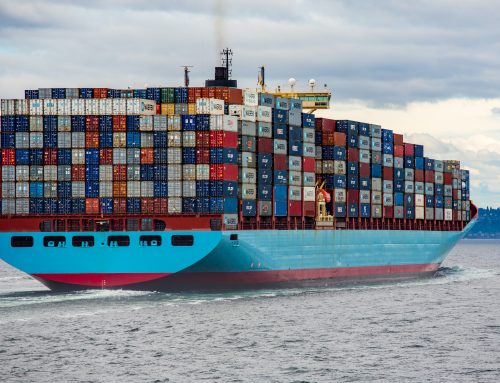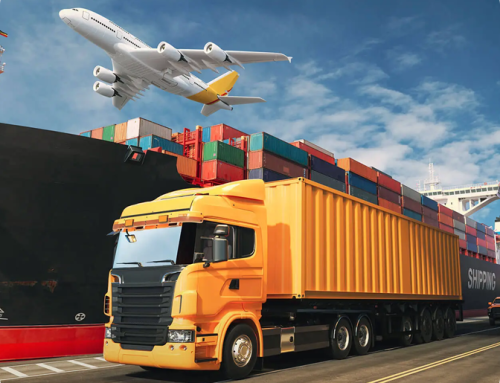The U.S. Department of Transportation’s Maritime Administration (MARAD) announced over $653 million to fund 41 port improvement projects across the country under the Port Infrastructure Development Program (PIDP).
This funding will help grow capacity and increase efficiency at coastal seaports, Great Lakes ports, and inland river ports.
A significant portion of domestic and international U.S. commerce by weight, (over 2.3 billion short tons) moves by water. According to a MARAD press release, the announced port improvement projects will strengthen supply chain reliability, create workforce development opportunities, speed up the movement of goods, and improve the safety, reliability and resilience of ports. These investments are part of the largest dedicated funding for ports and waterways in history – nearly $17 billion through the President’s Bipartisan Infrastructure Law.
“Everything from the food we eat to the cars we drive to the lumber and steel used to build our homes passes through America’s ports, making them some of the most critical links in our nation’s supply chain,” said U.S. Secretary of Transportation Pete Buttigieg. “These investments will help expand capacity and speed up the movement of goods through our ports, contributing to cleaner air and more good-paying jobs as we go.”
The PIDP’s mandate is to improve port and related freight infrastructure to meet the nation’s freight transportation needs. The program provides planning support, capital funding, and project management assistance to improve capacity and efficiency of ports in both urban and rural areas, as U.S. supply chains continue to recover from the pressures put on them by the COVID-19 pandemic.
At one point during the pandemic, more than a hundred ships were waiting to dock at West Coast ports. This contributed to inflationary prices. Today, there has been more than a 90% decrease in the number of container ships waiting for berths at U.S. ports, and global container shipping costs are down by more than 80% from their peak in 2021.
“Modernizing the nation’s port infrastructure is vital to the reinforcement of America’s multimodal system for transporting goods. The advantages of cargo movement on water extend well beyond the maritime domain,” said Maritime Administrator Ann Phillips. “By funding port infrastructure development, the Biden-Harris Administration is ensuring that goods move reliably and in greater quantities, strengthening supply chain resiliency across all modes of transportation, and addressing the negative impacts of port operations on public health and the environment that have harmed communities living near ports.”
Projects were selected based on their ability to improve the safety, efficiency, or reliability of the movement of goods, as well as on how well they would improve port resilience, and how well the project enhanced economic vitality, supported workforce development, addressed climate change and sustainability, and advanced equity.
Ports that will see improvements from the grants include:
Cold Bay, Alaska (Dock Infrastructure Replacement)
This project will include the design, permitting, and construction of a new dock to replace the community’s only existing dock, which is nearing the end of its useful service life.
Long Beach, California (North Harbor Transportation System Improvement Project)The project will add a third intermodal railroad track to the Dominguez Channel Bridge; relocate and modernize Pier B Street, on-dock roadways, and associated utilities; and realign Pico Avenue, including replacing and relocating aging utilities in the area.
Newark, New Jersey (Reconstruction of Berth PN-308 at Port Newark)
The project will reconstruct Berth PN-308. The new berth will have a 75-year service life, increase live load criteria from the current 500 pounds per square foot (psf) to 2,000 psf, and incorporate resiliency enhancements to the new structure such as a high-level platform and prestressed precast concrete planks.
North Bend, Oregon (Ko’Kwel Wharf Improvements Project)
The project will fund repairs to the dock facing Lot 2 of the Ko’Kwel Wharf, bring 800-amp service and a shore power outlet box to the wharf to reduce or eliminate the need for idling diesel engines, and include development phase activities leading to the future extension of the Wharf dock.
Ogdensburg, New York (Port of Ogdensburg Terminal Expansion Project)
The project includes an approximately 435-linear-foot expansion of the Port of Ogdensburg’s main dock terminal along with installation of a mooring dolphin system and associated dredging necessary to establish a new roughly 100-foot-wide by 500-foot-long berthing area immediately adjacent to the new terminal dock wall structure.
Wabasha, Minnesota (Wabasha Barge Terminal Project)
This project will construct a new inland river barge terminal at Upper Mississippi River Mile Marker 760 and develop the necessary access road and utilities to support its operation.
Wilmington, North Carolina (North Gate Relocation and Access Optimization)
The project will construct approximately 4,000 feet of elevated roadway access to the general cargo terminal, relocate the North Gate security checkpoint, install a new gate operating system, improve existing at-grade railroad crossings, construct buildings for badging, guardhouse, and cargo control, construct a truck queuing area, and install EV charging infrastructure and solar panels.
Tacoma, Washington (Port of Tacoma Husky Terminal Expansion Port One)
The project will reconfigure the Husky terminal yard for better truck circulation, install roughly 40 refrigerated cargo racks and related power supplies, and relocate on-terminal structures.
Freeport, Texas (Velasco Terminal Sustainable Expansion Project)
The project includes construction of a new approximately 36,900-square-foot cross-dock warehouse, related site improvements on a roughly 10-acre site, and a new terminal access truck gate.
Milwaukee, Wisconsin (Agricultural Maritime Export Facility – Phase 2)
The project will construct two grain storage silos, make electrical service upgrades, and fund purchase of additional grain and cargo handling equipment to expand the capacity of the port to handle the movement of grain commodities.
Blencoe, Iowa (Port of Blencoe Infrastructure Development Project)
The project will establish a new port at a site along the Missouri River. The project will consist of constructing a new commodity handling facility, storage for liquid commodities, receiving and handling equipment, conveyors, elevating legs, and additional infrastructure development such as internal road construction and site leveling to accommodate use of the southern side of the property for heavy industrial use.
Fort Smith, Arkansas (River Valley Slackwater Harbor Project)
The project will construct a slackwater harbor off the main channel of the Arkansas River. The harbor will be approximately 1,000 feet long and 200 feet wide and have the capacity to moor and offload up to eight barges at a time.
To stay informed on trade news and other important updates, stay connected with a customs broker.



